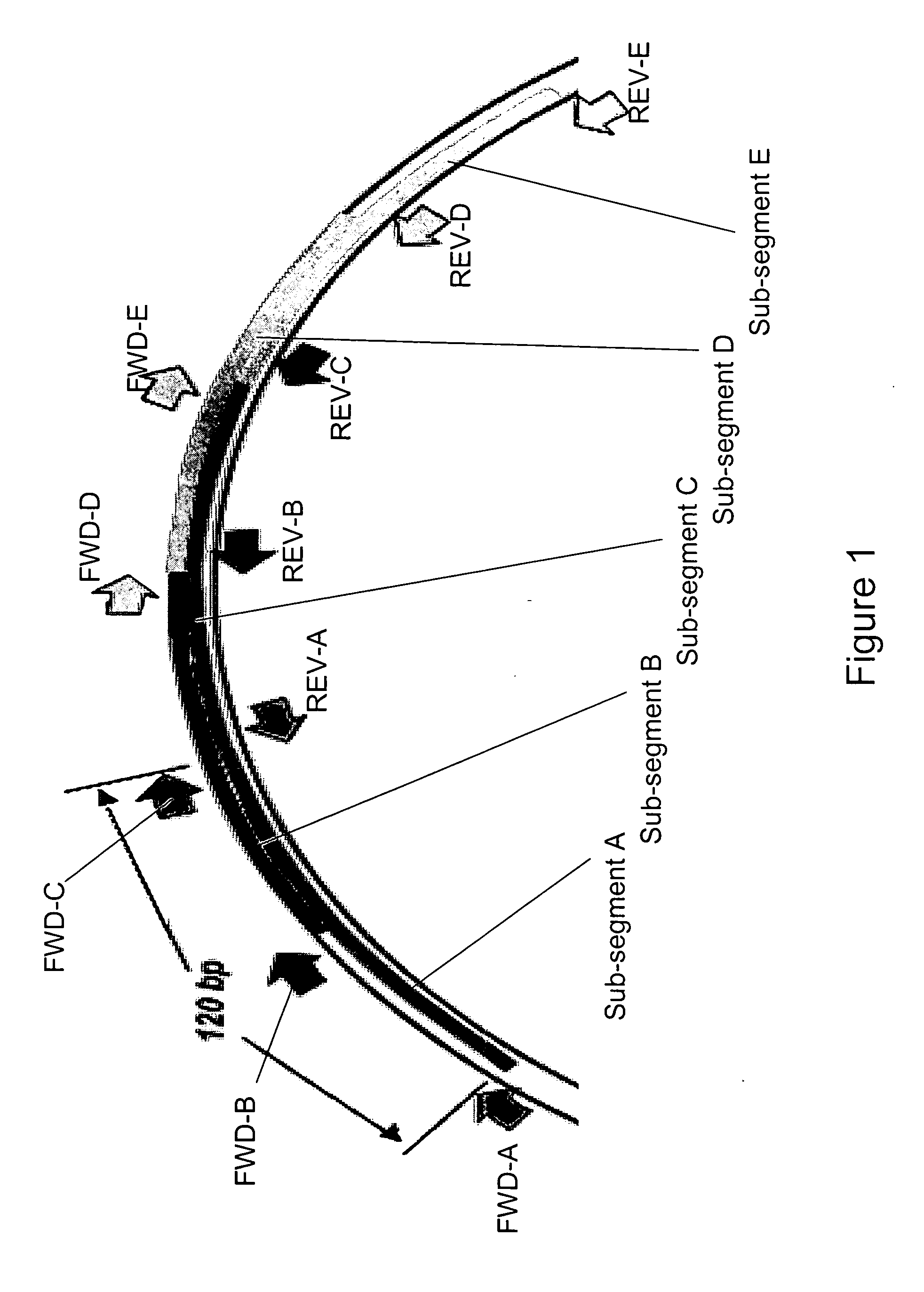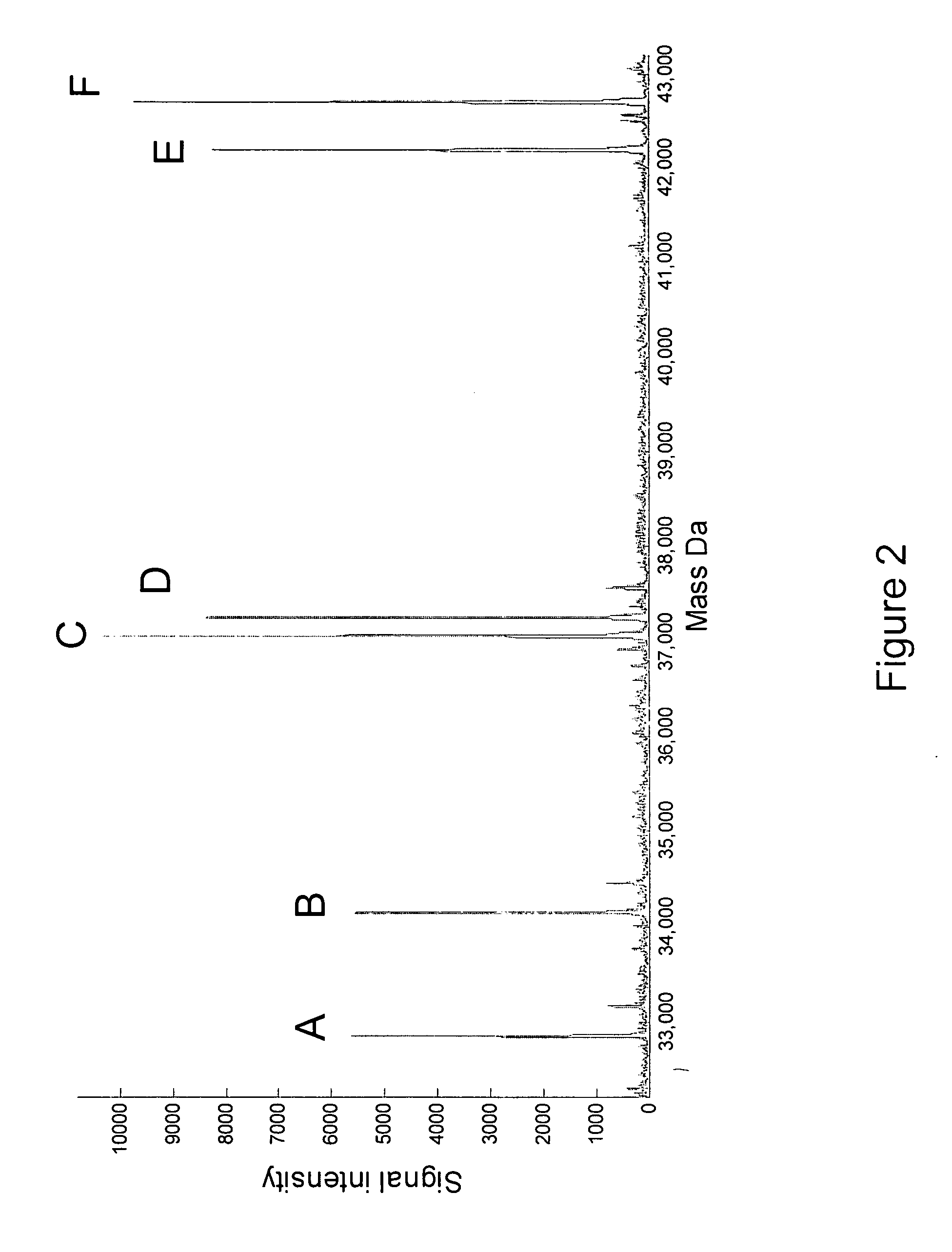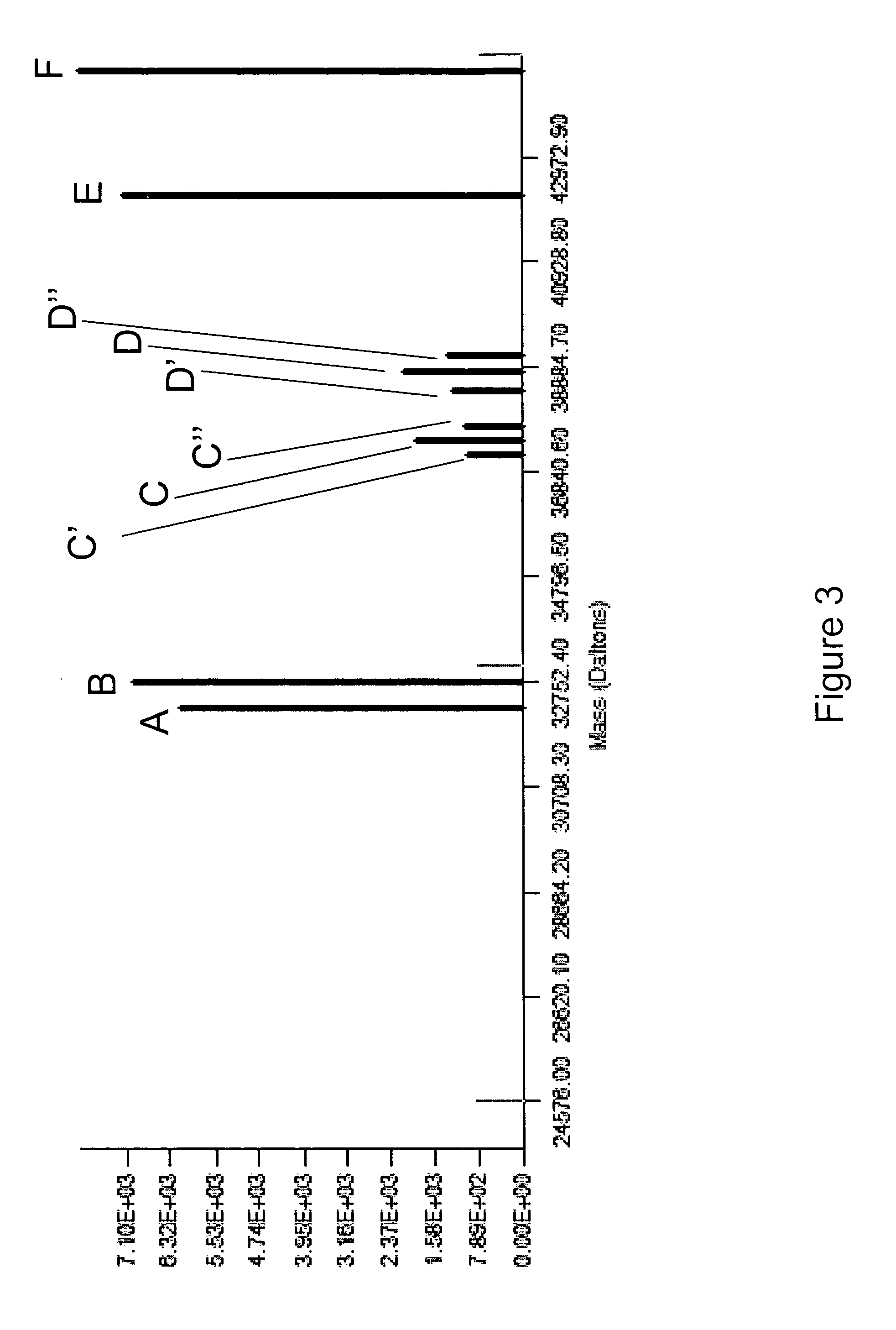Methods for rapid identification and quantitation of nucleic acid variants
- Summary
- Abstract
- Description
- Claims
- Application Information
AI Technical Summary
Benefits of technology
Problems solved by technology
Method used
Image
Examples
example 1
Selection of Primers for Analysis of Mitochondrial DNA
[0128] An alignment of 5615 mitochondrial DNA sequences was constructed and analyzed for regions of conservation which are useful as primer binding sites for tiling coverage of the mitochondrial DNA regions HV1 and HV2. A total of 24 primer binding sites were chosen according to the criterion that the 5′-end of the primer binding sites remain conserved across the alignment of mitochondrial DNA sequences. In some cases, only the 5′-terminal nucleobase itself is conserved. In other cases, as many as two or three consecutive nucleobases at the 5′ end of the primer binding sites are conserved.
[0129] In cases where primer coverage at a particular region is desired but complete conservation is absent, backup primer pairs can be chosen to ensure that target sequences will be amplified. For example, the 5′ end of the primer binding site for the forward primer of primer pair number 2893 is 99.7% conserved among the 5615 mitochondrial DN...
example 2
Validation of Triplex Tiling Mitochondrial DNA Assay
[0132] The 25 primer pairs of Table 1 were divided into triplex combinations of three primer pairs such that the amplification products of three primer pairs within a triplex combination have sense and antisense strands which are significantly different in molecular mass from the other sense and antisense strands of other amplification products within the triplex combinations. The triplex combinations are shown in Table 3 with reference to primer pair combinations.
TABLE 3Triplex Combinations of Primer Pairs for Simultaneous Analysis ofMitochondrial DNA RegionsTriplexCombinationPrimer PairPrimer PairPrimer PairNo.NumberNumberNumber12892290129062289129082925328902899290742898288929235290229102893 / 2894629162897289372904289629138289529122905
[0133] PCR cycle conditions used for obtaining amplification products for this assay are as follows: 10 minutes at 96° C. followed by six cycles of steps (a) to (c) wherein: (a) is 20 seconds at ...
example 3
Rapid Typing of Human Mitochondrial DNA
[0138] Mitochondrial DNA (mtDNA) analysis of forensic samples is performed when the quantity and / or quality of DNA are insufficient for nuclear DNA analysis, or when DNA analysis through a maternal lineage is otherwise desired. Forensic mtDNA analysis is performed by sequencing portions of the mtDNA genome, which is a lengthy and labor intensive technique. We present a mass spectrometry-based multiplexed PCR assay suitable for automated analysis of mtDNA control region segments. The assay has been internally validated with 20 DNA samples with known sequence profiles and 50 blinded samples contributed by external collaborators. Correct profiles were obtained in all cases when compared to sequencing data. Two samples containing mixed templates were observed and the relative contribution of each template was quantified directly from the mass spectra of PCR products.
[0139] The primer pairs of Table 1 were designed to amplify 1051 bases of human m...
PUM
| Property | Measurement | Unit |
|---|---|---|
| Fraction | aaaaa | aaaaa |
| Fraction | aaaaa | aaaaa |
| Fraction | aaaaa | aaaaa |
Abstract
Description
Claims
Application Information
 Login to View More
Login to View More - R&D
- Intellectual Property
- Life Sciences
- Materials
- Tech Scout
- Unparalleled Data Quality
- Higher Quality Content
- 60% Fewer Hallucinations
Browse by: Latest US Patents, China's latest patents, Technical Efficacy Thesaurus, Application Domain, Technology Topic, Popular Technical Reports.
© 2025 PatSnap. All rights reserved.Legal|Privacy policy|Modern Slavery Act Transparency Statement|Sitemap|About US| Contact US: help@patsnap.com



